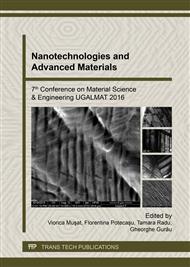p.103
p.108
p.114
p.120
p.127
p.133
p.139
p.145
p.154
Behavior Analysis of a Ship Structure Made out of Composite Materials
Abstract:
. In this paper a parametric static and torsion analysis on a catamaran ship structure made out of composites materials is performed. The best solution for material selection is based on specific criteria for certain analysis. For dynamic analysis, the main criteria is to obtain the structure natural frequencies in a range, far from the resonance frequencies produced by the ship propulsion installation, wave loads etc. For static analysis the comparative criteria is to obtain the lowest weight of structure for the same strength. Also, buckling item is other criteria for comparative analysis. The comparative analysis is performed between rule based scantling structure and a FEM based structure for a composite material twin hull deck, in order to reduce the total hull weight. Material used for ship deck structure of the analyzed ship is e-glass polyester.
Info:
Periodical:
Pages:
127-132
Citation:
Online since:
February 2017
Authors:
Keywords:
Price:
Сopyright:
© 2017 Trans Tech Publications Ltd. All Rights Reserved
Share:
Citation:


